Basic Mapping with Geopandas
Analyzing US Census Data in Python

Lee Hachadoorian
Asst. Professor of Instruction, Temple University
Geospatial Data - Further Learning
Loading Geospatial Data
import geopandas as gpd# Load a geospatial file geo_state = gpd.read_file("state_computer_use.gpkg")type(geo_state)
geopandas.geodataframe.GeoDataFrame
Geopandas DataFrames
print(geo_state.columns)
Index(['state', 'postal', 'name', 'geometry', 'total', 'has_computer',
'desktop_laptop', 'desktop_laptop_only', 'portable_device',
'portable_device_only', 'no_computer'],
dtype='object')
Geopandas DataFrames
print(geo_state.head())
state postal ... portable_device_only no_computer
0 06 CA ... 1052406 1263635
1 08 CO ... 148749 168639
2 11 DC ... 23554 32916
3 16 ID ... 46565 67454
4 17 IL ... 415840 640062
[5 rows x 11 columns]
Geopandas geometry Column
print(geo_state["geometry"].head())
0 (POLYGON ((-1716661.572795197 -1091585.2669098...
1 (POLYGON ((-787764.8711845676 -679501.90042785...
2 (POLYGON ((1950824.825659711 -402441.066172522...
3 (POLYGON ((-1357254.591159301 77405.1771214068...
4 (POLYGON ((720437.1241238854 -496471.759394428...
Name: geometry, dtype: object
Geopandas Plotting
geo_state.plot()
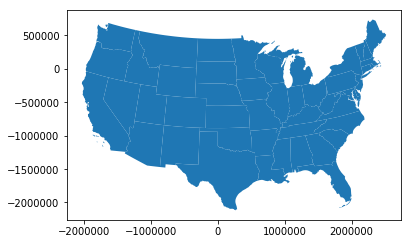
Choropleth Maps
geo_state.plot(column = "has_computer")
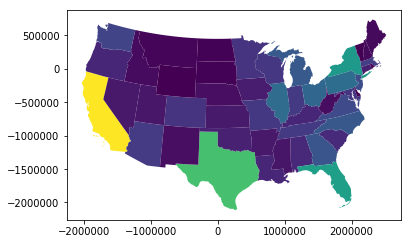
Choropleth Maps
geo_state.plot(column = "has_computer", cmap = "YlOrRd")
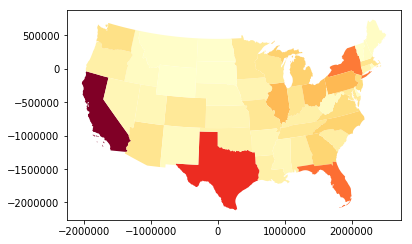
Choropleth Maps
geo_state["pct_has_computer"] = 100 * geo_state["has_computer"]/geo_state["total"]geo_state.plot(column = "pct_has_computer", cmap = "YlOrRd")
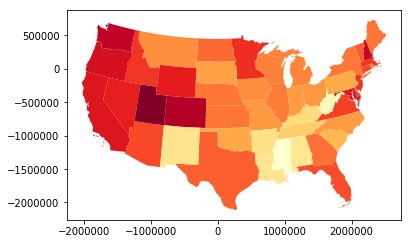
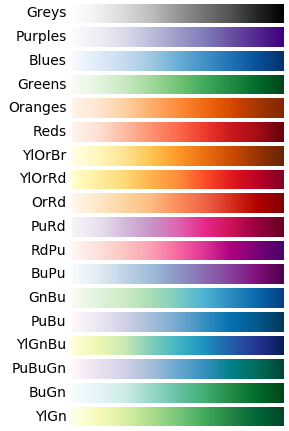
Matplotlib Sequential Colormaps
Let's practice!
Analyzing US Census Data in Python

